PLATED AND ELECTROPLATED SILVER MARKS OF FRANCE DOUBLÉ, PLAQUÉE, METAL, METAL BLANC, MÉTAL ARGENTÉ -L - O- |
|
created by Giorgio B. owner of www.silvercollection.it ©  |
This is a page of A Small
Collection of Antique Silver and Objects of vertu, a 1000
pages richly illustrated website offering all you need to know
about antique silver, sterling silver, silverplate, sheffield
plate, electroplate silver, silverware, flatware, tea services
and tea complements, marks and hallmarks, silver marking system and silver
hallmarks guide, articles, books,
auction catalogs, famous silversmiths (Tiffany, Gorham, Jensen,
Elkington, WMF, Reed & Barton, Mappin & Webb, Bateman Family),
history, oddities ... |
|
|
French solid silver is characterized by series of hallmarks and the presence of the maker's mark in a lozenge/diamond-shaped cartouche. On plated metal a square or rectangular cartouche is used for maker's mark. From 1797 the mark of the "métal plaqué", equivalent to British "Old Sheffield Plate", was a square or rectangular cartouche containing: - the initials of the maker - the word "DOUBLÉ" or "PLAQUÉ" - the figure indicating the quantity of silver (optional) The thickness of silver was indicated by a number followed by a small "E", "M" or "EM", as abbreviation of Dixième (Tenth). The number represented the percentage of silver relative to the base metal (higher numbers are indicative of the poorest quality of plating) |
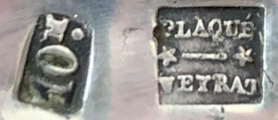
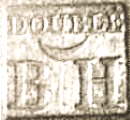
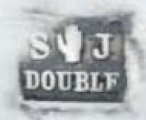
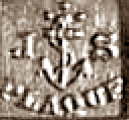
|
From 1860, to differentiate the "métal plaqué" from the "argenture par dépôt électrolytique", equivalent to British EPNS (Electro Plated Nickel Silver), were used square marks containing: - the initials of the maker and the figure indicating the quantity of silver |
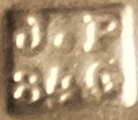
|
- the initials of the maker, a symbol and the figure indicating the quantity of silver |
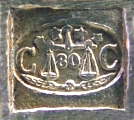
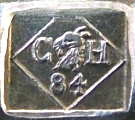
|
- the initials of the maker and a symbol accompanied by another cartouche containing the figure of the silver content |
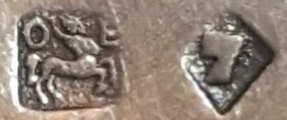
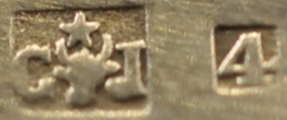
|
Sometimes they are accompanied by additional marks with the inscription "METAL" or "METAL BLANC" (WHITE METAL) |

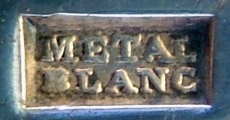 |
|
|
MÉTAL ARGENTÉ |
| To strengthen consumer protection, the French Parliament voted on July 1, 1983 a law which reformed the Guarantee and codified the conditions of silver hallmarking. In this context it was decided to measure the thickness of silver deposited on the entire surface and to institute minimum standard thicknesses for silverplate. The old mark expressed in grams, which is not compulsory, remains in use. Often it indicates silver weights greater than the new imposed standards. The new square hallmark (applicable from August 1984) therefore guarantees the thickness of the silver layer deposited on the item. The POINÇON CARRÉ is the official mark for "métal argenté". It is a square containing: - I or II, identifying the first or second quality of manufacture - a symbol identifying the maker - the initials of the maker 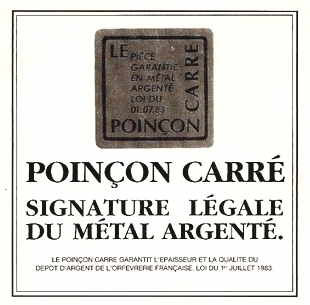
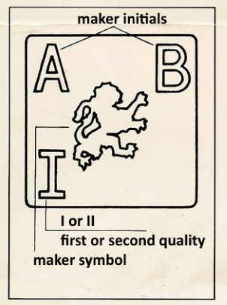
|
These are the requirements to be allowed to use the "POINÇON CARRÉ" mark and "métal argenté" denomination (plating thickness is measured in Micrometers: a micron is one thousandth of a millimeter or 0.001mm). 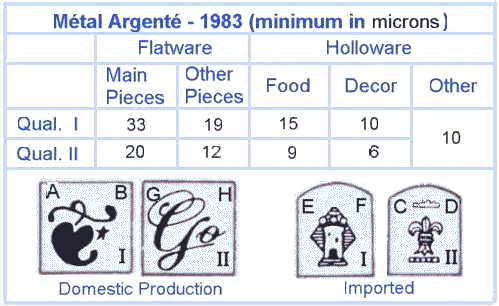
|
|
|
NUMBERS IN FRENCH SILVERPLATE |
| The meaning of numbers in French silverplate marks has changed over time: 1797 - c. 1860 number accompanied by "E", "M" or "EM" (meaning Dixiéme / tenth) in the upper right corner. This number is the percentage of silver used to plate the copper ingot (plating was made using the system known in the UK as "Old Sheffield Plate") c. 1860 - 1983 number alone or accompanied by "G" or "GR". This is the number of grams of silver used to plate a single item or a dozen of spoons or forks (referred to the process of silver electroplating which has supplanted the OSP system) after 1983 "Roman" numbers I or II in a corner. This number identifies the first or second quality of "métal argenté". The quality of the plating is determined by the microns of silver present on the item (a micron is one thousandth of a millimetre or 0.001mm). |
|
FRENCH SILVERPLATE MARKS DIRECTORY BY INITIALS/SYMBOLS DIRECTORY BY NAMES MAKER'S MARK INITIAL: A - B - C - D - E - F - G - H - I - J - K - L - M - N - O - P - Q - R - S - T - U - V - W - X - Y - Z - |
FRENCH SILVERPLATE MAKERS' MARKS |
 L and a seated lion / un lion assis 
 Grands Magasins du Louvre, rue de Marengo, Paris, a retail business active from 1855
Grands Magasins du Louvre, rue de Marengo, Paris, a retail business active from 1855
L&S and an anchor / une ancre  Maker not identified
Maker not identified
LA and a symbol / un symbole  Auzolle Léopold, Paris, active 1885-1905
Auzolle Léopold, Paris, active 1885-1905
LC and two crossed cutlery / deux couverts croisés  Maker not identified
Maker not identified
LCF under a crown, into an araldic shield / sous une couronne, dans un bouclier araldique 

 Le Couvert Francais
Le Couvert Francais
LEMAITRE & RIDOUX 
 Lemaitre & Ridoux, 18 boulevard Voltaire, Paris, founded in 1861
Lemaitre & Ridoux, 18 boulevard Voltaire, Paris, founded in 1861
LF and a two interlaced L / deux L entrelacés 

 Lenain & Fils, 16 rue Dupetit-Thouars, Paris, 1920-1929
Lenain & Fils, 16 rue Dupetit-Thouars, Paris, 1920-1929
LL and a crown over a star / une couronne, une étoile au-dessus LL and a crown / une couronne L&L and a crown / une couronne 


 Lamy & Lacroix, 40 rue Meslay (later 36, rue de Bondy), Paris. Partnership of Aimé Lamy (1819-1889) and Elie Lacroix, active 1858-1881. Parisian branch of Lamy & Lacroix, foundry in Morez, Jura
Lamy & Lacroix, 40 rue Meslay (later 36, rue de Bondy), Paris. Partnership of Aimé Lamy (1819-1889) and Elie Lacroix, active 1858-1881. Parisian branch of Lamy & Lacroix, foundry in Morez, Jura
LL Vve and two crossed oars / deux rames en croix  Lambert Léonie, 187 rue du Temple, Paris active from 1904
Lambert Léonie, 187 rue du Temple, Paris active from 1904successor to Lambert Léon (1881-1904) LM and a three leaf clover with two stars / un trèfle à trois feuilles avec deux étoiles  Legros Marius, 16 rue du Pontaux Choux (1906) and 62 rue Charlot (1915), Paris
Legros Marius, 16 rue du Pontaux Choux (1906) and 62 rue Charlot (1915), Paris
LMP into an oval  Lévy, Martin & Plainchault, 16 rue Pierre-Levée, Paris
Lévy, Martin & Plainchault, 16 rue Pierre-Levée, Paris
LP and a horse's head / une tête de cheval  Philippe Louis, 112 rue du Temple, Paris, active c. 1926, succeeding to Alfred Philippe
Philippe Louis, 112 rue du Temple, Paris, active c. 1926, succeeding to Alfred Philippe
LR and crossed spoon and forks over a star / cuillère et fourchettes croisées sur une étoile 
 Ravinet Louis, (1854-1925), succeeded to E. Tonnelier in 1882. In 1891 entered in partnership with Charles D'Enfert (1865-1960) in a company under the style Ravinet D'Enfert (see mark RD)
Ravinet Louis, (1854-1925), succeeded to E. Tonnelier in 1882. In 1891 entered in partnership with Charles D'Enfert (1865-1960) in a company under the style Ravinet D'Enfert (see mark RD)
LR and two palms, three stars above, four stars below / deux palmes, trois étoiles au-dessus, quatre étoiles en dessous  Maker not identified (mark probably linked to Robert Louis)
Maker not identified (mark probably linked to Robert Louis)
LR and a wing, a palm, three stars above, four stars below / une aile, une palme, trois étoiles au-dessus, quatre étoiles en dessous  Robert Louis, 7 rue du Temple, Paris, active c. 1917
Robert Louis, 7 rue du Temple, Paris, active c. 1917
LS and a hunting horn / un cor de chasse  Schooman Louis, 90 rue d'Angouléme and 9 impasse de la Baleine, Paris, active from 1921
Schooman Louis, 90 rue d'Angouléme and 9 impasse de la Baleine, Paris, active from 1921
LUTETIA 

 Lutetia, a 1910s/1920s line of Orfèvrerie Ercuis
Lutetia, a 1910s/1920s line of Orfèvrerie Ercuis
LUX and two terrestrial globes and an anchor / deux globes terrestes et une ancre  Société Française d'Alliage de Métaux, 9 faubourg Poissonière, Paris. Factory at Bornet (Oise)
Société Française d'Alliage de Métaux, 9 faubourg Poissonière, Paris. Factory at Bornet (Oise)
LV intertwined / entrelacés  Vuitton Louis, 70 Champs-Elysée, Paris
Vuitton Louis, 70 Champs-Elysée, Paris
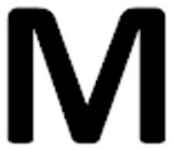 MANUFre FRANCse NICKEL PUR and a boar / un sanglier  Manufacture française de Nickel Massif Pur
Manufacture française de Nickel Massif Pur
M B and a deer head / un tête de cerf  Bietrix Marc, 51 rue de Lafayette, Paris, active from 1946
Bietrix Marc, 51 rue de Lafayette, Paris, active from 1946MB and a symbol / un symbole  Maison Barra
Maison Barra
MB radiant sun forming the O and capped by a moon / soleil rayonnant formant le O et coiffé d'une lune M.F.B.O. into a sun / dans un soleil 
 Maison Bautz
Maison BautzManufacture Française d'Orfèvrerie Maison Bautz , 3 rue de Portefoin, Paris, active c. 1900 M BARRÉ and a shamrock / un trefle  Barré Marcel, 114 rue de Turenne, Paris, active 1919-after 1931
Barré Marcel, 114 rue de Turenne, Paris, active 1919-after 1931succeeded to Edmond Molle MD and an anvil / un enclume  Mégemond Joseph & Charles Deneux, 3 passage des Petites Ecuries, Paris, active 1863-1888
Mégemond Joseph & Charles Deneux, 3 passage des Petites Ecuries, Paris, active 1863-1888
M GOUAILLE and a star / M. Gouaille et une étoile  Gouaille Maurice, 13 rue Notre-Dame-de-Nazareth, Paris, active after 1922
Gouaille Maurice, 13 rue Notre-Dame-de-Nazareth, Paris, active after 1922
MINERVA and head of Minerva into a shield / tête de Minerve dans un blason 

 Société Française du Métal Minerva Clair & Cie
Société Française du Métal Minerva Clair & CieLager E.P. Manufacture d'Orfèvrerie Metal-Blanc ML and a daisy / une marguerite  Lesage Marc, 25 rue Michel-le-Comte, Paris, active from 1920
Lesage Marc, 25 rue Michel-le-Comte, Paris, active from 1920
MM and an ear / une oreille  Maker not identified
Maker not identified
MPR and a sword, two anchors and sacred heart / une épée, deux ancres et un coeur sacré  Poussielgue Rusand Maurice , (1861-1933). Owner of Maison Poussielgue Rusand Fils, 5 rue Cassette, Paris, the company was active until 1963
Poussielgue Rusand Maurice , (1861-1933). Owner of Maison Poussielgue Rusand Fils, 5 rue Cassette, Paris, the company was active until 1963
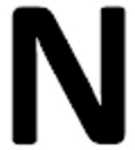 N&A and a crank / un tour  Noury Jules & Allain Edmond, 10 and 14 rue de Oberkampf, Paris, active from 1921
Noury Jules & Allain Edmond, 10 and 14 rue de Oberkampf, Paris, active from 1921
N&C and a bee / une abeille  Nivard & Couillard, 102 rue de St.Lazarre (Caurier, agent), Paris and Sourdeval, Manche, Basse-Normandie (factory). Active c. 1900
Nivard & Couillard, 102 rue de St.Lazarre (Caurier, agent), Paris and Sourdeval, Manche, Basse-Normandie (factory). Active c. 1900
NB and a windmill / un moulin à vent  Bourgeois Nicolas, 37 rue Volta (1888-1908) and 44 bis boulevard Richard-Lenoir (1908-1910), Paris. Succeeded by Paul Morel in 1910
Bourgeois Nicolas, 37 rue Volta (1888-1908) and 44 bis boulevard Richard-Lenoir (1908-1910), Paris. Succeeded by Paul Morel in 1910
NC and a cock and three stars / un coq et trois étoiles 

 Collet Noël, 68 rue Victor Hugo à Puteaux, active c.1922
Collet Noël, 68 rue Victor Hugo à Puteaux, active c.1922 POINÇON CARRÉ adopted after 1983 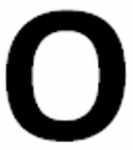 O and an oil lamp / une lampe 
 Maison Odiot, Paris, founded in 1690
Maison Odiot, Paris, founded in 1690O and an oil lamp / une lampe OB and a five-pointed star in a triangle / une étoile à cinq branches dans a triangle  Orfévrerie Brossier Léon, 86 rue des Archives, Paris, active c. 1903
Orfévrerie Brossier Léon, 86 rue des Archives, Paris, active c. 1903Successors of Maison Brunet, founded 1840 OC and a rising sun over a star / un soleil levant, une étoile au dessou  Olier & Caron, 39 rue de Turbigo, Paris, active c. 1910-1936
Olier & Caron, 39 rue de Turbigo, Paris, active c. 1910-1936
OC and a chess horse / un cheval d'échecs 


 Orfèvrerie Christofle, Gallia collection
Orfèvrerie Christofle, Gallia collectionThe "crown mark" (couronne) might correspond to the collection Gombault Desclerc acquired by Halphen and returned to Christofle with the acquisition of Halphen by Christofle. The "crown mark" was used from 1939 to 1960 (information courtesy Katharina Becker). 
 OE and a centaur / un centaure 



 Orfèvrerie Ercuis, founded in 1867 by Adrien Céleste Pillon. From 2015 the company is under the control of the Italian group Sambonet Paderno
Orfèvrerie Ercuis, founded in 1867 by Adrien Céleste Pillon. From 2015 the company is under the control of the Italian group Sambonet Paderno
the new POINÇON CARRÉ adopted after 1983 by Orfèvrerie Ercuis to mark the "métal argenté" OE and LUTETIA into a crowned shield / LUTETIA en écu couronné 
 Lutetia, a 1910s/1920s line of Orfèvrerie Ercuis
Lutetia, a 1910s/1920s line of Orfèvrerie ErcuisOL and statue of liberty or a symbol / statue de la Liberté ou un symbole 
 Orfèvrerie Liberty, 2 Rue de l'Orgerie, Château-Gontier-sur-Mayenne, active 1928 - present
Orfèvrerie Liberty, 2 Rue de l'Orgerie, Château-Gontier-sur-Mayenne, active 1928 - presentOP and a pot and a horseshoe / un pot et un fer à cheval  Orfèvrerie Pot fer, 16 rue de Crussol, Paris, active from 1944
Orfèvrerie Pot fer, 16 rue de Crussol, Paris, active from 1944
ORFÈVRERIE GALLIA and a rooster within a shield / un coq dans un bouclier  Orfèvrerie Gallia a trade mark of Christofle
Orfèvrerie Gallia a trade mark of Christofle
ORVAL inside a square / à l'intérieur d'un carré  maker not identified
maker not identified
|
|
FRENCH SILVERPLATE MARKS DIRECTORY BY INITIALS/SYMBOLS DIRECTORY BY NAMES MAKER'S MARK INITIAL: A - B - C - D - E - F - G - H - I - J - K - L - M - N - O - P - Q - R - S - T - U - V - W - X - Y - Z - |
REPERTOIRE DES ORFEVRES FRANCAIS AA AH B CA CG D EA EJ F GA GH HA HG I JA JH K LA LH MA MH N O PA PH Q R S T U V W X Y Z |
|
This is a page of A Small Collection of Antique Silver and Objects of vertu, a 1500 pages richly illustrated website offering all you need to know about antique silver, sterling silver, silverplate, sheffield plate, electroplate silver, silverware, flatware, tea services and tea complements, marks and hallmarks, articles, books, auction catalogs, famous silversmiths (Tiffany, Gorham, Jensen, Elkington, WMF, Reed & Barton, Mappin & Webb, Bateman Family), history, oddities ... SITE MAP SILVER DICTIONARY |